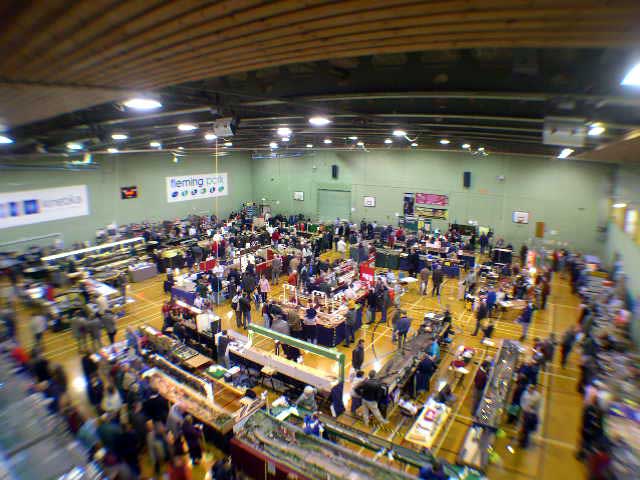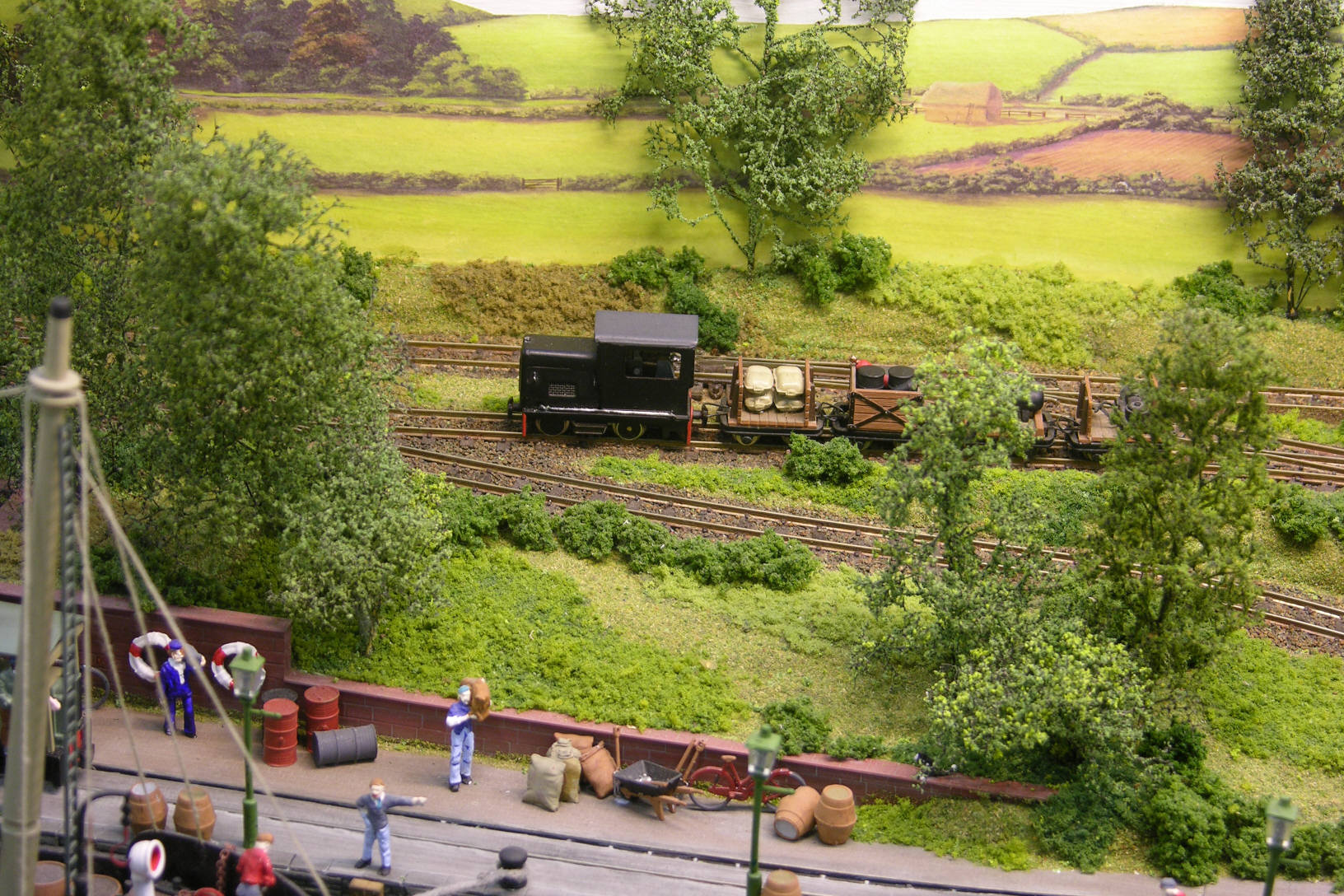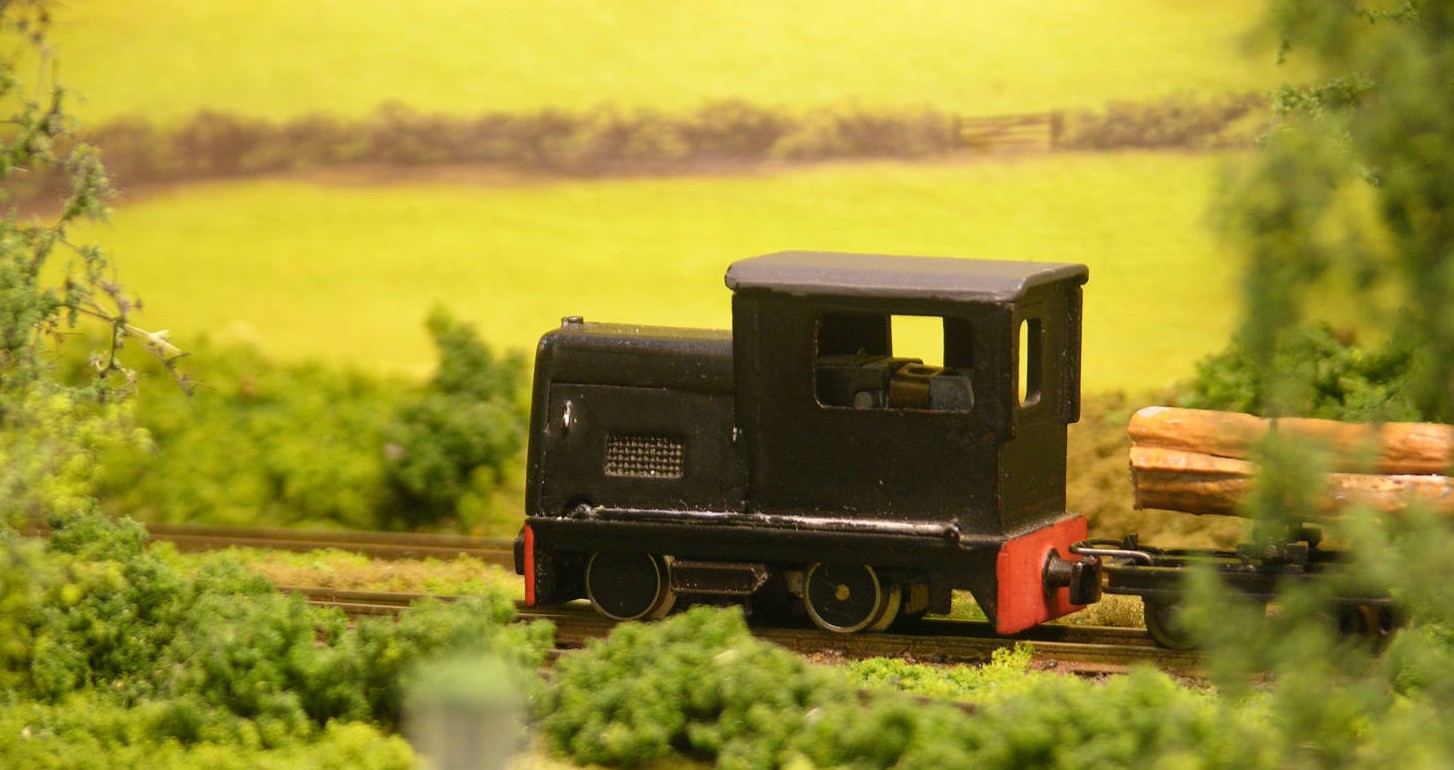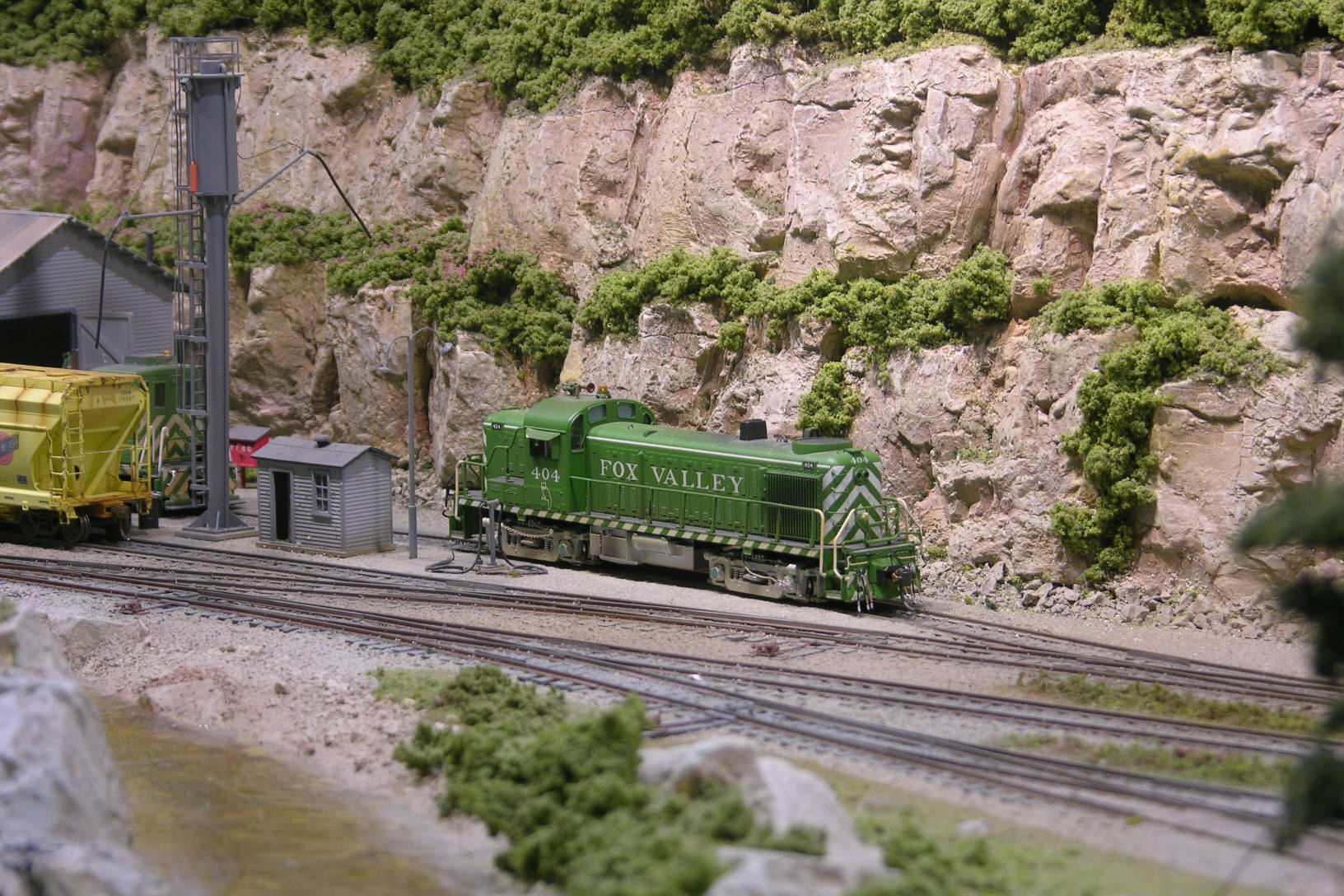Eastleigh, Hampshire (UK)

| Eurotrack 2007 |
| Fleming Park Leisure Center, Eastleigh, Hampshire (UK) |
| February 28th/29th, 2007 |
 |
| Special Report |
| Text & pictures copyright © 2007 by Ian How |
Click on pictures to enlarge.Text in italic is extracted from the Exhibition Guide 2007.
| [OO9] - Scrubbs Lane | ||
 |
 |
|
| [S 1:64] - East Lynn / [HO] Fox Valley | ||
 |
 |
|
The scene is set in 1903 at a time when the railways were the principal means of transport. Passenger trains consist almost entirely of six-wheeled coaches. Goods traffic is mainly coal and general merchandise coming in, with agricultural produce and livestock going out. In addition there is a quayside that handles coal, fish and imported timber, all ofwhich are carried by the railway. The granary siding andwagon turntables are shunted by chain. There are no ready to run models available for British S scale. All the locomotives, rolling stock, track and buildings have been hand built. On most buildings the bricks are individually hand painted. True scale standards are used for the track and wheels. All vehicles have compensated or sprung suspensions and all locomotives are fitted with flywheels. Baseboards are constructed from 4 mm plywood. Signals and points are operated from a mechanical lever frame by means of cranks and rods under the baseboards. Cab control is used for the section switching and electronic feedback controllers are used to give precise control. If you would like to know more about the layout, the scale or the S Scale Model Railway Society, please ask the operators, they will be only too pleased to help. There is a society Website at: www.s-scale.org.uk. | ||
| Home > Smrg > Eurotrack 2007 | ||
| Created March 9th, 2007. | ||
| Text and pictures copyright ©2007 by Ian How and respective Exhibition Guide writeups authors. Web Hosting and page layout by Frédéric Delaitre. | ||